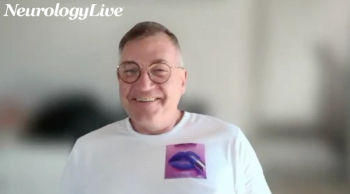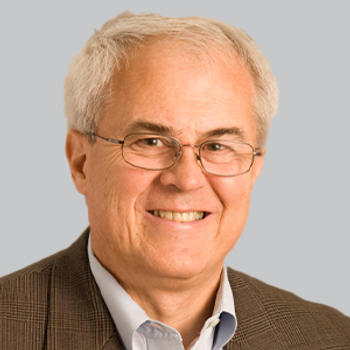
Looking Ahead in Alzheimer Therapy Development
The founding executive director and chief science officer of the Alzheimer’s Drug Discovery Foundation spoke about the exciting therapeutic landscape in Alzheimer and what holes remain.
Howard Fillit, MD
Although Alzheimer disease has been plagued by failures in clinical trials, the number of therapies that have shown promise in recent years has given some clinicians in the field something to be excited about. Howard Fillit, MD, is one of those excited physicians.
Recently, Fillit, the founding executive director and chief science officer of the Alzheimer’s Drug Discovery Foundation (ADDF), coauthored a review paper exploring the therapeutic landscape of current agents being studied for the prevention and treatment of Alzheimer disease and other dementias.1
To discuss this report and the clinical trial information that Fillit and coauthors collected, he spoke with NeurologyLive in an interview.
NeurologyLive: What are the main takeaways for clinicians with this report?
Howard Fillit, MD: Well, we’ve seen a lot of failures. We have an almost 100% failure rate since about 2004 in Alzheimer clinical trials, and this has led to a lot of skepticism and sort of loss of hope for the field. But most of those trials, the vast majority of those trials, have been anti-amyloid studies and what we’ve been trying to do for the last 15 years or so is to explore novel therapeutics that are non-amyloid and are based on the fact that aging is the leading risk factor of Alzheimer disease. What this paper is doing is trying to translate this huge body of knowledge from the aging field, particularly the biological gerontology field, and—this is our scientific strategy for developing drugs—taking those basic principles of things like inflammation, mitochondrial metabolic failure, epigenetic problems, and vascular problems and translate that knowledge into new therapeutics for Alzheimer disease that are based on the fact that aging is the leading risk factor for Alzheimer disease.
What the paper does is go through each of these risk factors, like inflammation, and then list and describe some of the key drugs that are in development and are non-amyloid directed drugs. There are probably 40 or 50 drugs that are listed in the paper that are non-amyloid drugs that are based on these alternative mechanisms that are showing promise in clinical trials.
What are the most promising targets for the development of therapies?
More than half the portfolio that we have is using repurposing drugs. In other words, taking drugs that are already in the market that have promise for Alzheimer disease based on animal model studies or mechanism of action-type work, where we know the safety profiles of these drugs and we think they’re going to work for Alzheimer. We’re running clinical trials of those drugs for Alzheimer disease, and once those trials are reported out, then the practicing clinician can use those drugs for Alzheimer disease. One of the more promising repurposing trials that I think we’re running is a drug that is commonly used for ALS called riluzole. We’re very excited for the clinical trial that’s being done now with riluzole for Alzheimer disease.
Another example that’s a little different is the fact that APOE4 is a huge genetic risk factor for Alzheimer disease. We’ve known about it for 25 years, that people that have 2 E4 genes, 1 from mom 1 from dad, have about a 15 times increased risk of getting Alzheimer disease about 10 years earlier than the average patient. Usually, onset is in the 60s. Up until this time, there have been multiple failures in trying to fix the APOE4 problem. We think we have the answer in gene therapy, and we’re funding a gene therapy program at Weill Cornell Medicine here in New York City where we’re inserting the APOE2 gene into a viral vector. This type of therapy has recently been approved for spinal muscular atrophy, and we’re adapting that for the treatment to offset the risk of APOE4 by giving it into the brain of people, so they have the capacity to make APOE2, which is a protective form of apolipoprotein-E. This just received approval from the FDA as an IND to go into human clinical trial. We’re very excited about that because somewhere between 15% and 16% of people with clinical dementia from Alzheimer disease have APOE4.
Is the field trending away from the anti-amyloid and anti-tau therapies?
We as a foundation trended away from them about 10 years ago, not so much because we were skeptical about the targets, but because big pharma had picked it up. As a foundation interested in taking risks and wanting to promote innovation in therapies for Alzheimer, and not having the $1-2 billion to bring these to market, we stop funding amyloid and tau therapies at that time pretty much.
But I think the word isn’t in yet on whether anti-amyloid or anti-tau therapies as they’re currently constructed will work or not. I think the new generation of anti-amyloid clinical trials, such as the one Biogen recently ran where we use this biomarker as a PET amyloid scan to enroll patients, so we know 100% of people enrolled that have Alzheimer disease and then use that as a marker for target engagement to show that the drug works, are exciting. Also, some other work from the Genentech has shown that these antibodies are able to remove amyloid from the brain. So now there are phase 3 trials looking at whether, in doing that, people will actually get better or at least if it will the slow rate of progression of their Alzheimer disease dementia.
I would say that these tracks are running in parallel and I think we’re sort of pioneering and at the front of developing new therapies. We’re going to need combination therapy for Alzheimer, just like we have combination therapies for other diseases like cancer, heart disease, hypertension, and diabetes. We’re going to need combination therapy for Alzheimer disease. So even if the anti-amyloid or the anti-tau drugs work, we’re still going to need other types of therapies to address issues like inflammation and epigenetic abnormalities and mitochondria abnormalities that also occur in these patients.
REFERENCE
1. Hara Y, McKeehan N, Fillit H. Translating the biology of aging into novel therapeutics for Alzheimer’s disease. Neurology. 2019;92:1-10. doi:10.1212/WNL.0000000000006745
Newsletter
Keep your finger on the pulse of neurology—subscribe to NeurologyLive for expert interviews, new data, and breakthrough treatment updates.









































